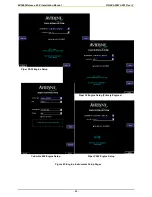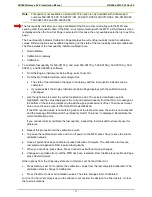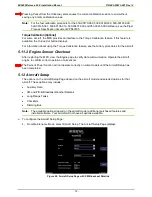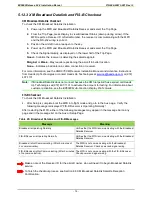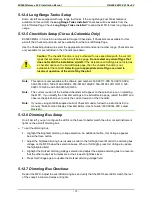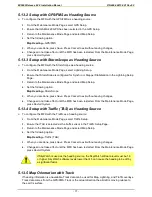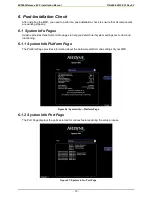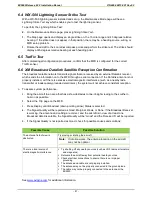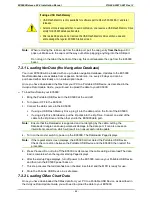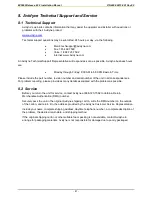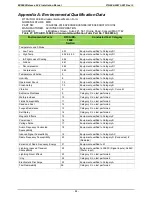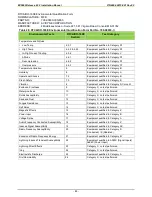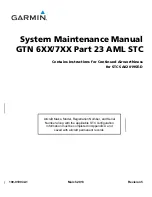
EX5000 Release 8.2.2 Installation Manual
- 80 -
6.2 Electro-Magnetic Compatibility (EMC) Check
The EMC check verifies that all of the electronic systems installed on the aircraft are compatible.
Operating the MFD should not result in Nav flags, constant location lightning strikes on the WX-500
sensor, noise on COMM channels, or other phenomena.
•
COM Radios
—Scan through radio channels to ensure there is no interference caused by the
MFD. Check random frequencies from 118.00 MHz through 136.975 MHz as well as your local
ground and tower frequencies to ensure there is no break in squelch due to the installation.
•
GPS
—Ensure that correct position is displayed and that there is no change in satellite signal
strength with the MFD powered off.
•
Autopilot
—Ensure that autopilot Self Test passes OK with the MFD powered on.
•
Other Instruments
—Verify there is no adverse effect on other instruments with the MFD
powered on.
6.3 TWX670 Lightning Sensor Strike Test
With a TWX670 lightning sensor installed and set up, the Maintenance Mode page will have a
Lightning Strike Test
key which enables you to test the lightning sensor.
To perform the Lightning Strike Test:
1.
On the Maintenance Mode page, press
Lightning Strike Test
.
2.
The Map page opens and displays the following strike test pattern.
Figure 28: TWX670 Lightning Sensor Strike Test Pattern
3.
Verify the following:
The display shows four boxes (one at each of the four cardinal directions). A tight cluster of test
strikes within each of these boxes is a “pass” condition.
One or more boxes lacking a cluster of test strikes is an indication of a “fail” condition.
The display shows strikes from thunderstorms as well as test strikes; therefore it is not unusual to
see strikes outside the boxes. Look for a cluster of test strikes within each of the boxes to make a
pass/fail determination, not at the presence of strikes outside the boxes.
A poorly clustered set of test strikes, whether within or outside of the bounding box, may be an
indication of noise.



